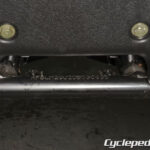Gone are the days when cyclists would inflate their road bike tyres to the maximum pressure and hope for the best. Modern understanding reveals that excessively high pressure is not only uncomfortable but also slower. Optimising your road bike tyre pressure is one of the most straightforward and cost-effective ways to enhance your bike’s performance and comfort.
Whether you’re a novice cyclist or a seasoned rider seeking peak performance, understanding tyre pressure is crucial. Finding the ideal pressure for your road bike tyres is a delicate balance.
Your tyre pressure needs to be high enough to minimise energy loss from tyre deformation and ensure predictable handling when cornering. Conversely, it must be low enough to absorb road imperfections rather than bouncing harshly over them.
In this comprehensive guide, we will explore the vital role of tyre pressure, the factors that influence your optimal pressure, and how to determine the pressure that works best for you and your riding style.
Recommended Tyre Pressures for Road Bikes
Some tyre manufacturers provide pressure recommendations or calculators for their road bike tyre ranges. These can serve as excellent starting points, particularly for dry conditions on smooth roads.
It’s crucial to consider the actual inflated size of your tyres, as this can vary and influence the ideal pressure for your specific tyre and rim combination. If your tyre inflates wider than its stated size, slightly less pressure will be needed than recommended in standard tables, and vice versa.
Similarly, heavier riders or those carrying loads will require higher tyre pressures, while lighter riders will benefit from lower pressures.
Always adhere to the pressure limits specified by both your rim and tyre manufacturers, especially the maximum pressure limits. These are typically found on the tyre or rim sidewalls. If you have wheels with hookless rims, be aware that the maximum permitted tyre pressure might be significantly lower than with traditional hooked rims.
Tyre Pressure for 23mm and 25mm Tyres
| 700x23c tyre on a 17mm rim | 700x25c tyre on a 19mm rim |
|---|---|
| Rider weight | Recommended pressure |
| ≤ 50kg / ≤ 110lb | 84psi / 5.8bar |
| 51-57kg / 112-126lb | 90psi / 6.2bar |
| 58-65kg / 128-143lb | 96psi / 6.6bar |
| 66-73kg / 145-161lb | 102psi / 7bar |
| 74-81kg / 163-179lb | 106psi / 7.3bar |
| 82-88kg / 181-194lb | 110psi / 7.6bar |
| ≥ 89kg / ≤ 196lb | 115psi / 7.9bar |
| ≥ 96kg / ≤ 212lb | Use 700x25c tyre |
| On a 19mm rim: lower pressure by 0.4bar / 6psi | On a 21mm rim: lower pressure by 0.3bar / 5psi |
Advice from Pirelli for their tubeless road tyres provides a solid starting point, regardless of your tyre brand. Remember to adjust these figures based on the factors we’ll discuss to fine-tune your tyre pressure.
Tyre Pressure for 28mm and 30mm Tyres
| 700x28c tyre on a 19mm rim | 700x30c tyre on a 19mm rim |
|---|---|
| Rider weight | Recommended Pressure |
| ≤ 50kg / ≤ 110lb | 65 psi / 4.5bar |
| 51-57kg / 112-126lb | 70psi / 4.8bar |
| 58-65kg / 128-143lb | 75psi / 5.2bar |
| 66-73kg / 145-161lb | 80psi / 5.5bar |
| 74-81kg / 163-179lb | 85psi / 5.9bar |
| 82-88kg / 181-194lb | 90psi / 6.2bar |
| ≥ 89kg / ≤ 196lb | 95psi / 6.6bar |
| ≥ 96kg / ≤ 212lb | 100psi / 6.9bar |
| On a 21mm rim: lower pressure by 0.3bar / 5psi | On a 21mm rim: lower pressure by 0.3bar / 5psi – On a 23mm rim: lower pressure by 0.4bar / 6psi |
Pirelli advises riders over 96kg / 212lb to use 700 x 25c tyres or larger, as the recommended pressure for heavier riders may exceed the maximum limit for 700 x 23c tyres. Always prioritise staying within the maximum pressure ratings of your tyres and rims.
Personal tyre pressure preferences can vary. For example, a rider weighing around 63-64kg might use different pressures for different scenarios. For time trials on smooth roads, 90psi front and rear with 23mm tyres (inflated to 25mm on 19mm rims) could be suitable. However, for everyday riding on rougher roads with 28mm tyres on 19mm rims, a lower pressure around 65psi might be preferred.
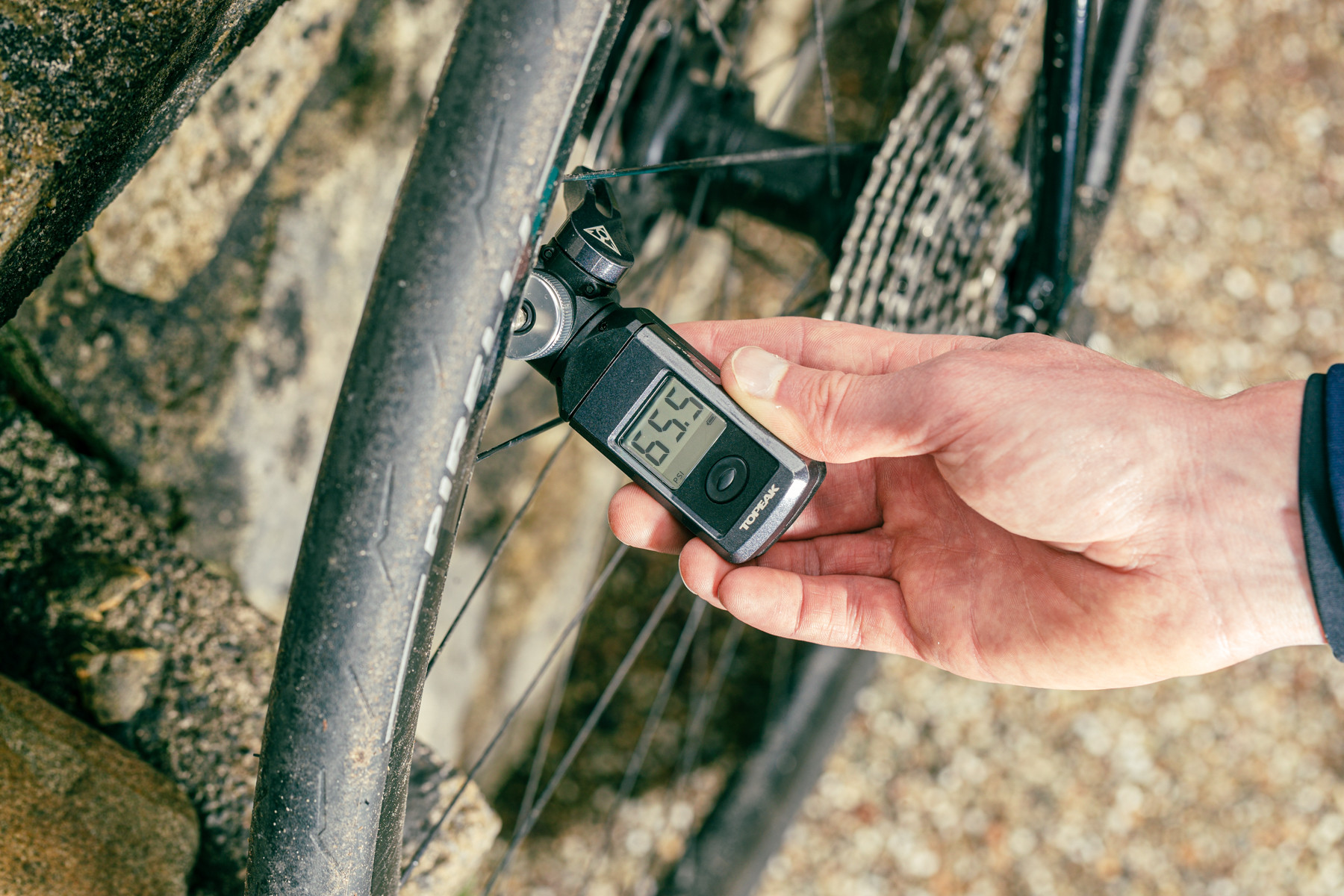 Cyclist using a track pump to inflate road bike tyres
Cyclist using a track pump to inflate road bike tyres
Road Bike vs. Mountain Bike or Gravel Bike Tyre Pressure
Road bike tyre pressure differs significantly from mountain bike or gravel bike tyre pressure. Off-road bikes typically use much wider tyres and rims to handle varied terrain and obstacles. Mountain bike and gravel bike tyre pressures are considerably lower to improve grip and comfort on uneven surfaces. If you also ride off-road, explore our separate guides on mountain bike tyre pressure and gravel bike tyre pressure.
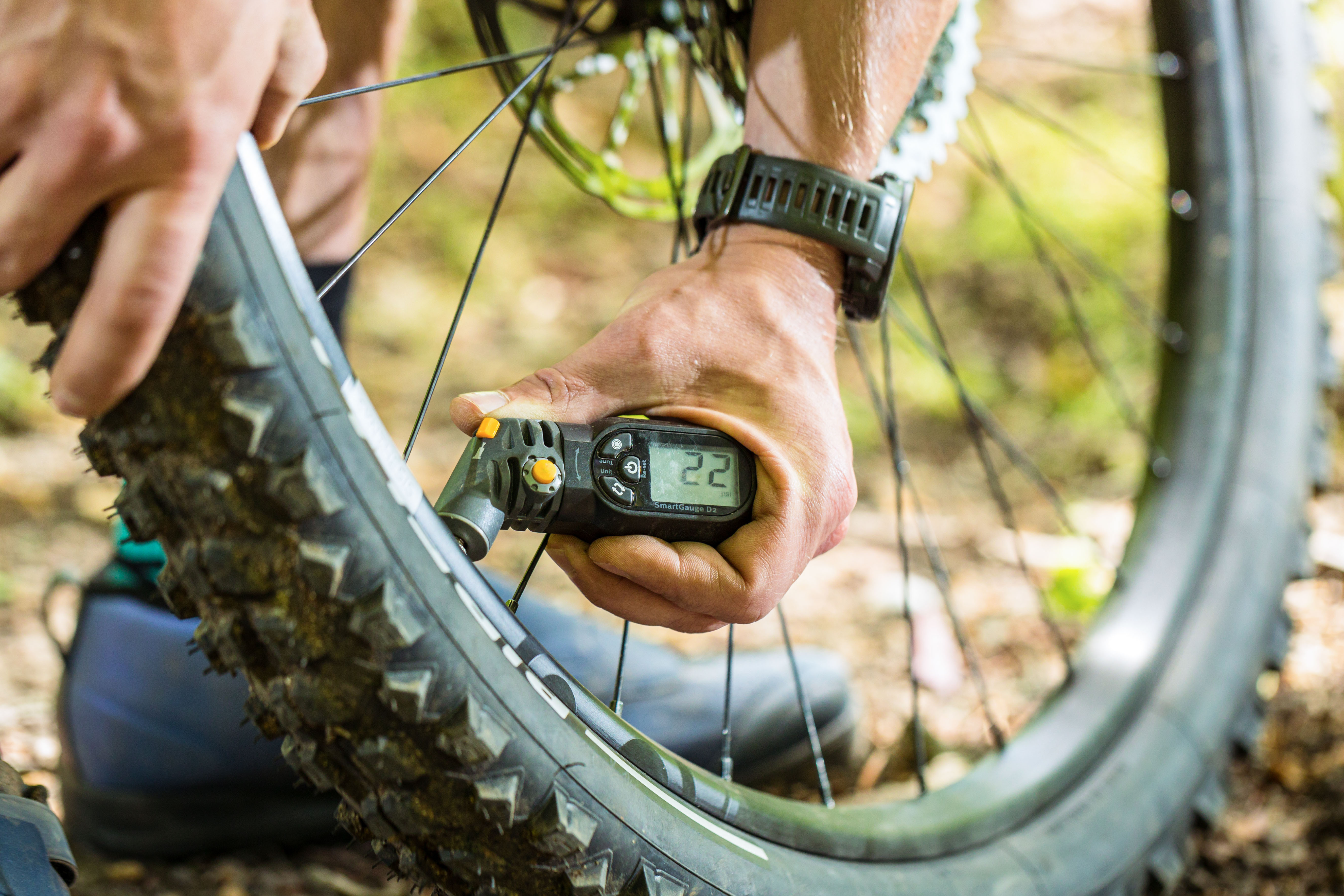 Close-up of a pressure gauge showing 22 PSI, indicating mountain bike tyre pressure
Close-up of a pressure gauge showing 22 PSI, indicating mountain bike tyre pressure
Key Considerations for Road Bike Tyre Pressure
Before delving into the details, here are four essential points to consider regarding road bike tyre pressure.
The Importance of Optimal Tyre Pressure
 Damaged road bike tyre with a pinch flat near the rim
Damaged road bike tyre with a pinch flat near the rim
Achieving the correct tyre pressure makes your rides more efficient, comfortable, and reduces the likelihood of punctures. Optimising tyre pressure is critical for minimising rolling resistance and maximising comfort, both essential for performance. Rolling resistance is the force that opposes your tyres’ motion on the road surface.
Insufficient tyre pressure increases energy loss due to tyre casing deformation and friction with the road. It also elevates the risk of pinch flat punctures, where the inner tube is pinched between the tyre and rim upon impact with a road imperfection.
Conversely, excessively high tyre pressure makes the tyre too rigid. This causes the bike to vibrate over road imperfections, diminishing comfort and wasting energy as your body absorbs the shocks instead of the tyres.
The Feel of Speed vs. Actual Speed
High tyre pressures might feel fast initially, but this sensation can be deceptive. Beyond a certain point, increased pressure reduces grip, amplifies high-frequency vibrations, and leads to increased muscle fatigue—all factors that can actually slow you down over longer rides. Optimal tyre pressure enhances both speed and comfort, contributing to a more efficient and enjoyable ride.
Essential Tools for Tyre Inflation
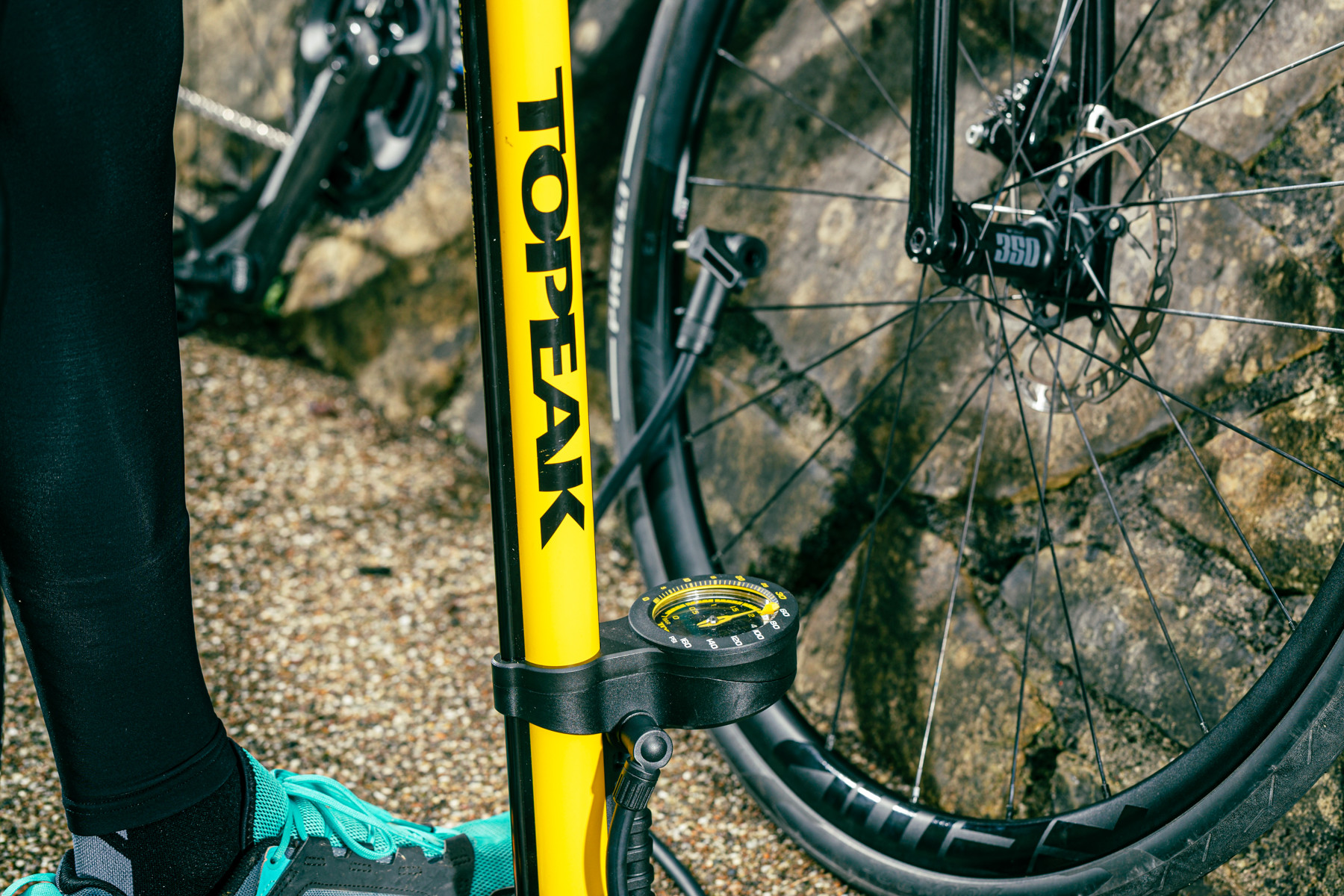 Cyclist using a track pump to inflate road bike tyres
Cyclist using a track pump to inflate road bike tyres
To accurately set your road bike tyre pressure, a track or floor pump with a built-in pressure gauge is indispensable. While budget-friendly options are available, investing in a high-quality pump is wise due to its frequent and long-term use.
For precise pressure adjustments, consider a dedicated tyre pressure gauge. These tools allow for fine-tuning and ensure consistent tyre pressure for optimal performance.
Caution: Err on the Side of Lower Pressure
When deciding on road bike tyre pressure, it is generally better to err slightly on the side of ‘too low’ rather than ‘too high’. Testing by experts like Silca indicates that performance diminishes rapidly beyond the optimal pressure for a given setup. While slightly lower pressure might incur a minimal speed penalty, it significantly improves comfort, especially on rough road surfaces.
Factors Influencing Optimal Tyre Pressure
The recommended pressure charts are starting points. Numerous factors beyond tyre and rim size and rider weight influence your ideal road bike tyre pressure.
Tyre Size and Rim Width
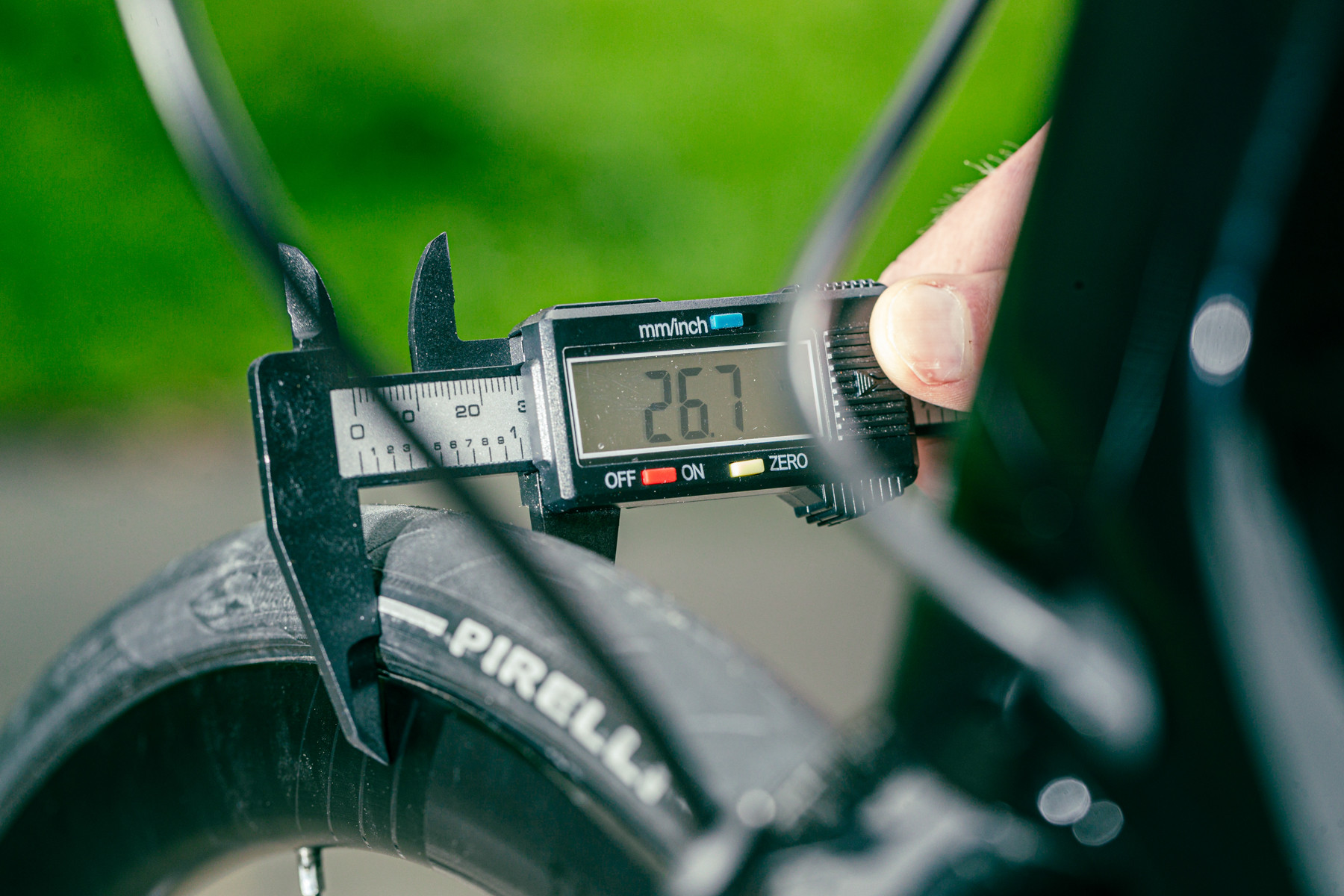 Close-up of a road bike tyre mounted on a wide rim, showing tyre width
Close-up of a road bike tyre mounted on a wide rim, showing tyre width
Accurately determining your tyre size is crucial for calculating optimal pressure. Despite labelled sizes like 700 x 25c, the actual inflated size varies based on tyre design and the wheel’s internal rim width.
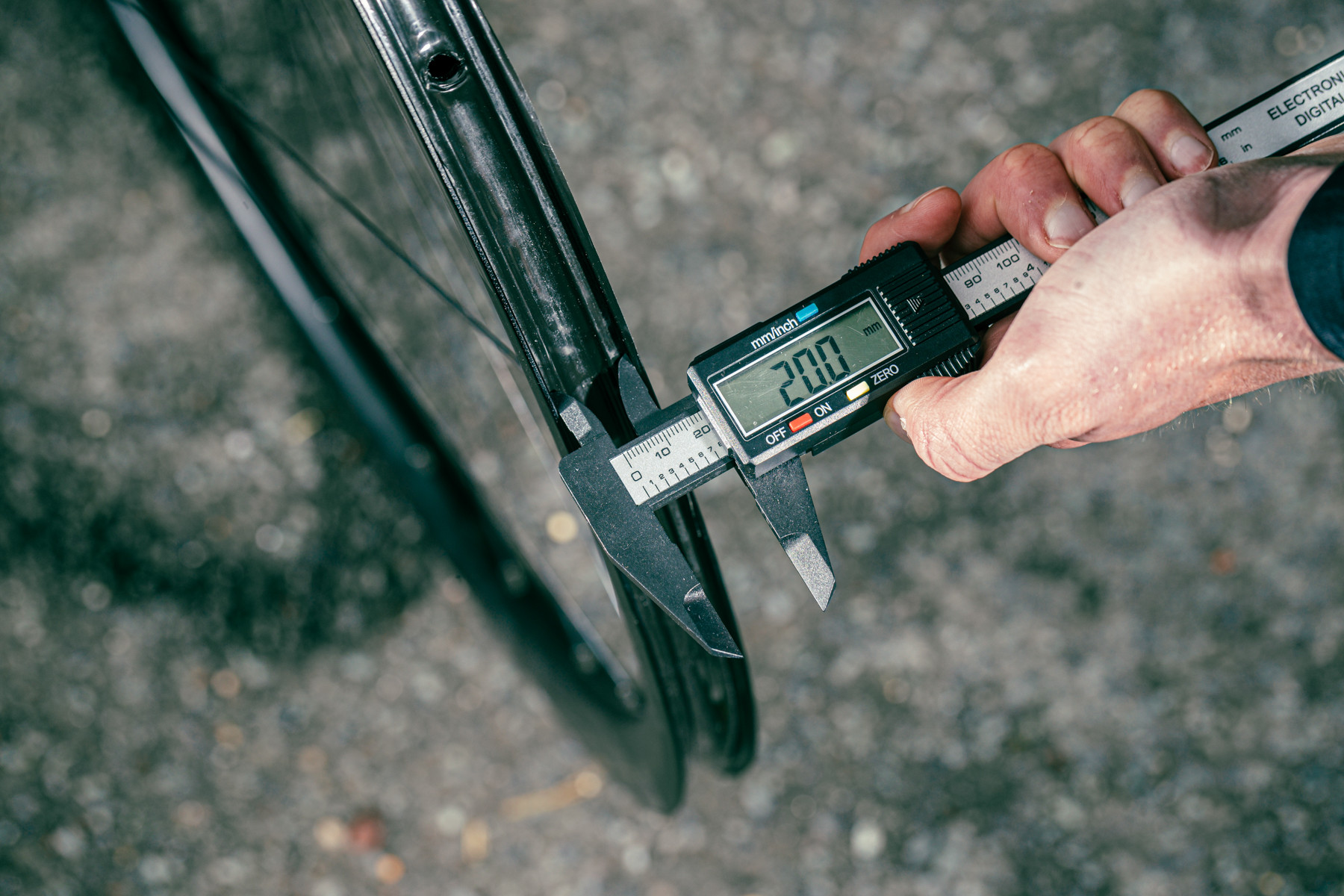 Close-up of a wide road bike rim, highlighting its internal width
Close-up of a wide road bike rim, highlighting its internal width
Most modern road tyres are designed around the 2020 ETRTO standards, which specify a 19mm internal rim width. Wider rims (internal width greater than 19mm) will likely increase the measured width of a tyre when inflated, and vice versa. Consequently, the optimum pressure will likely be lower when using wider rims compared to narrower rims with the same tyre.
System Weight and Weight Distribution
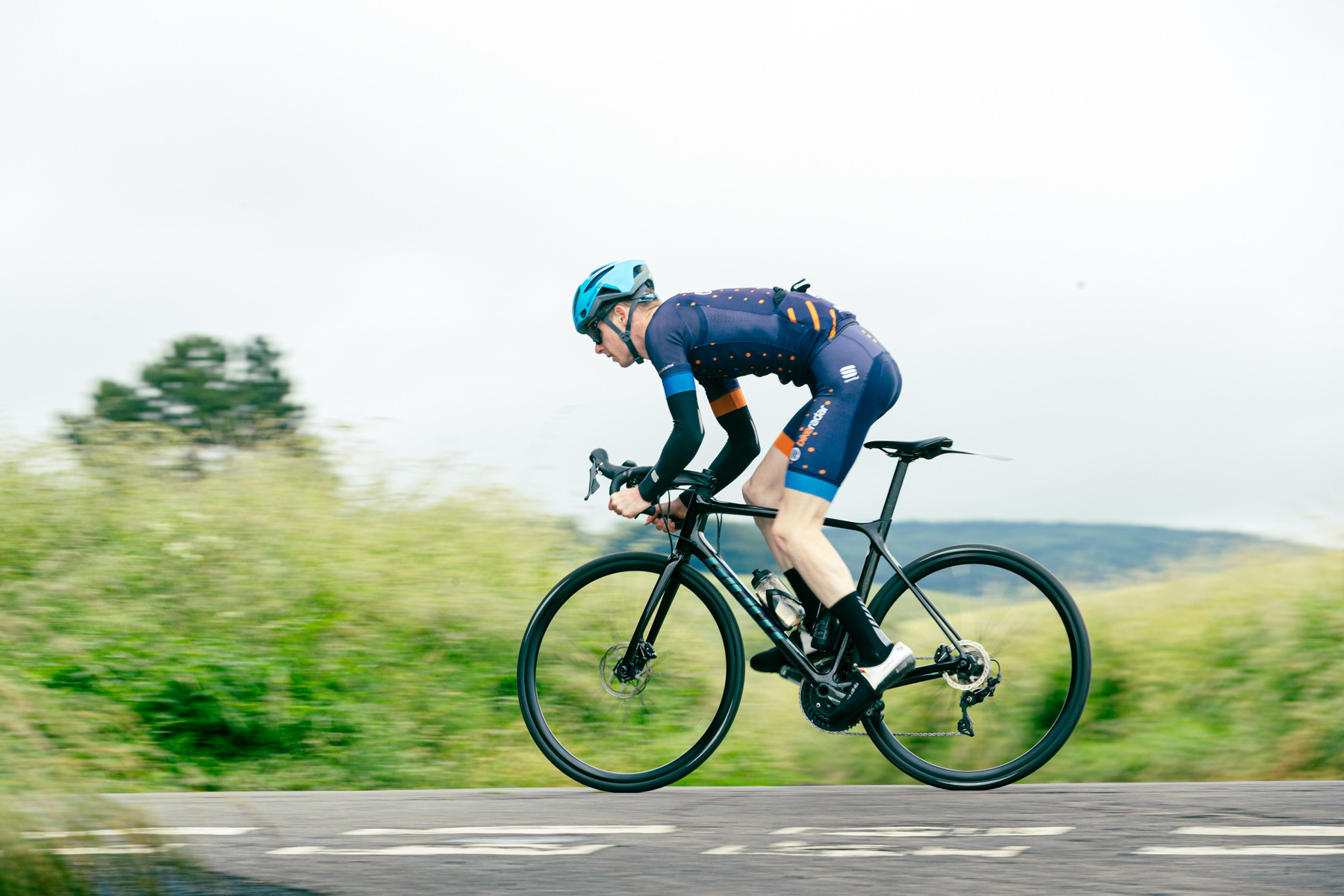 Cyclist riding a lightweight road bike uphill
Cyclist riding a lightweight road bike uphill
While rider weight is the dominant factor in system weight, the weight of your bike and any carried gear also matters. If you ride a lightweight road bike without extra luggage, you might reduce your tyre pressure slightly. Conversely, a heavier touring bike or a road bike loaded with bikepacking bags will require higher tyre pressures.
Weight distribution on a road bike is typically uneven, with the rear wheel bearing slightly more load than the front. As a general guideline, reducing front tyre pressure by a few psi compared to the rear is advisable.
Road Conditions and Surface
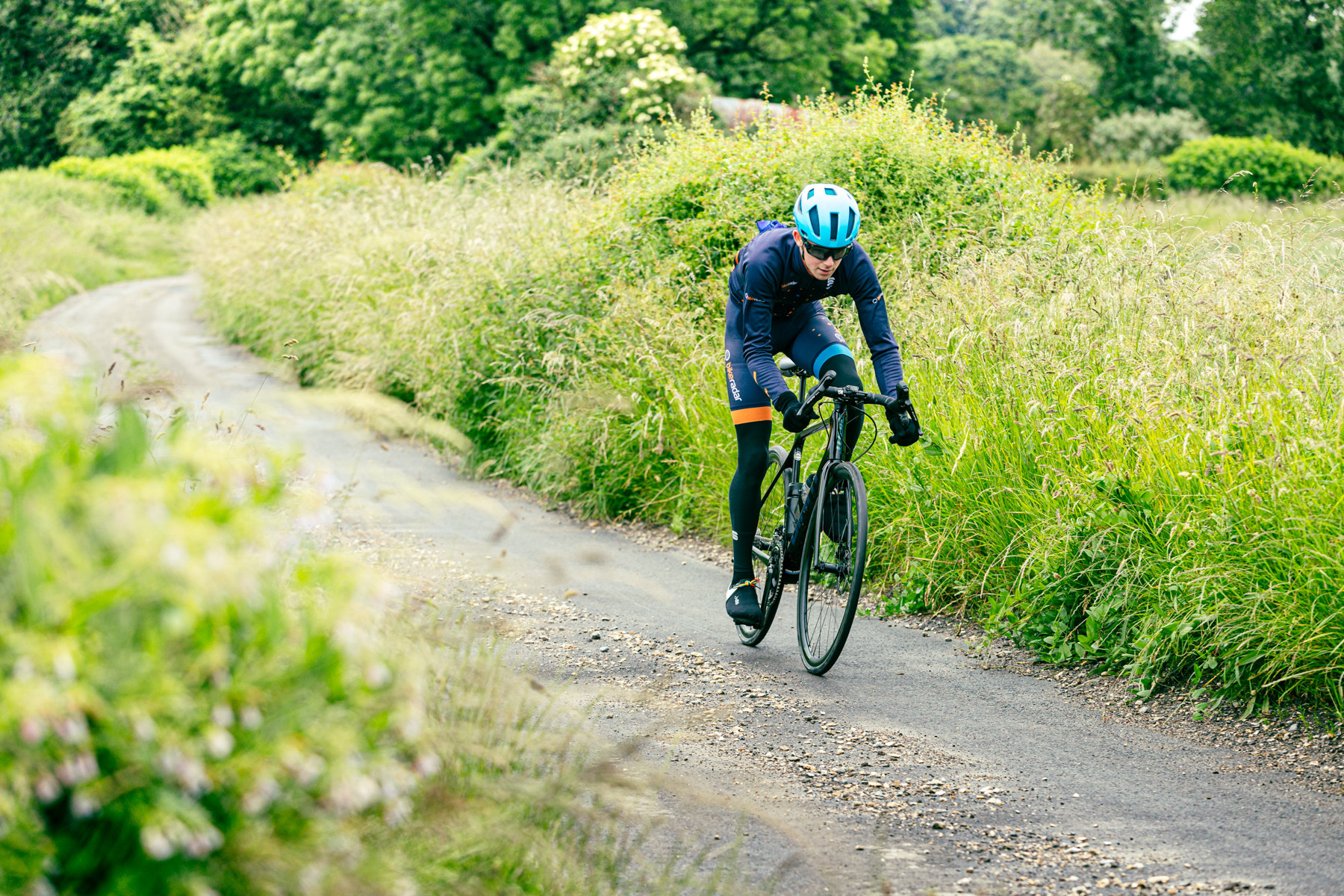 Road cyclist riding on varied road surfaces
Road cyclist riding on varied road surfaces
On perfectly smooth surfaces like velodromes, higher tyre pressures are faster. However, on real-world roads with imperfections, excessively high pressures increase vibrations and can slow you down. Rougher roads necessitate lower tyre pressures.
On very rough roads, smaller tyres (25mm or narrower) at low pressure might not offer sufficient rim or inner tube protection, especially for heavier riders, increasing the risk of pinch flats or rim damage.
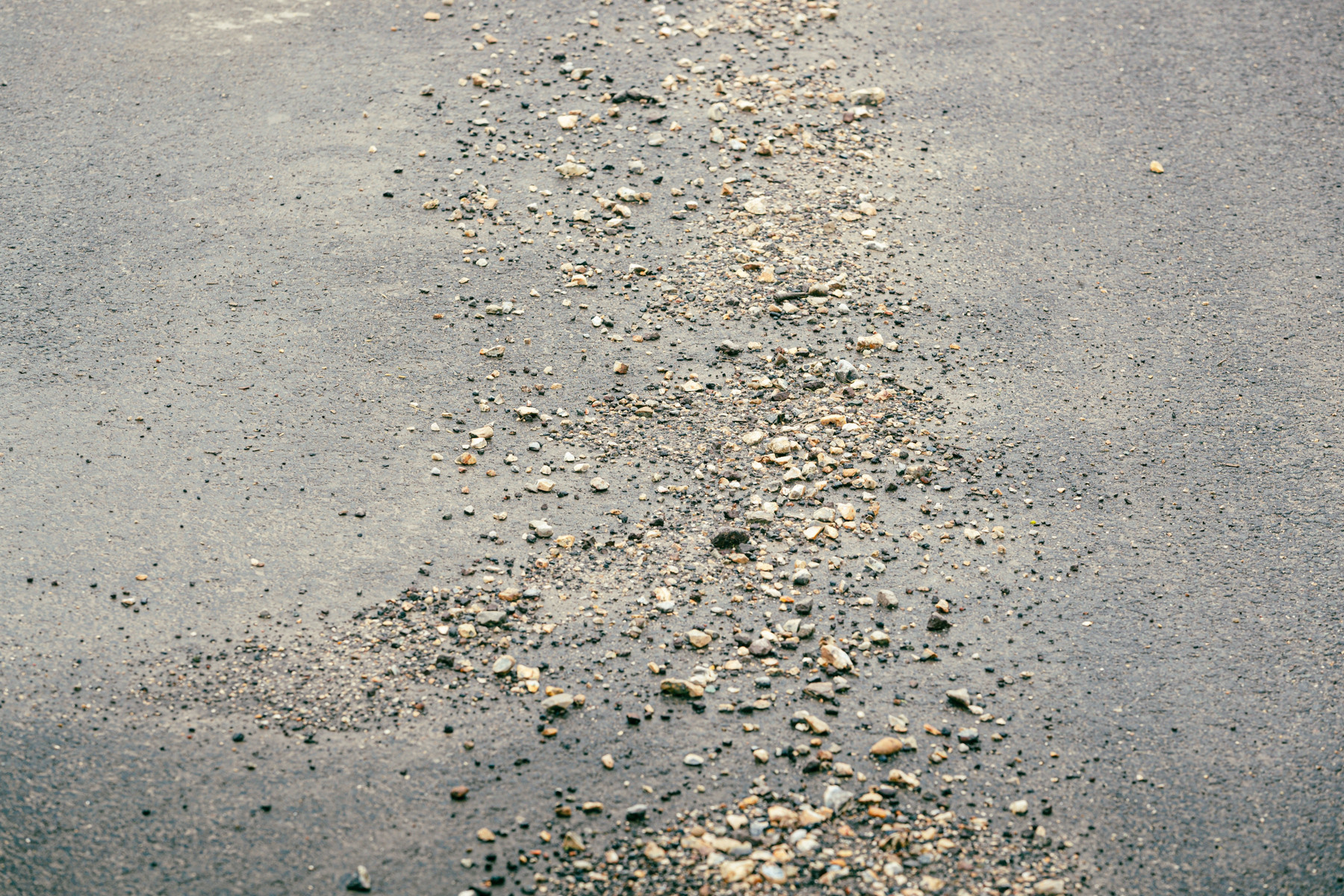 Road cyclist riding on a gravel road
Road cyclist riding on a gravel road
Switching to wider tyres provides greater tyre volume, allowing for lower pressures that improve both rolling resistance and comfort on rough roads. This is why professional cyclists use 28mm+ tyres for races over cobblestones, like Paris-Roubaix.
Weather and Temperature Effects
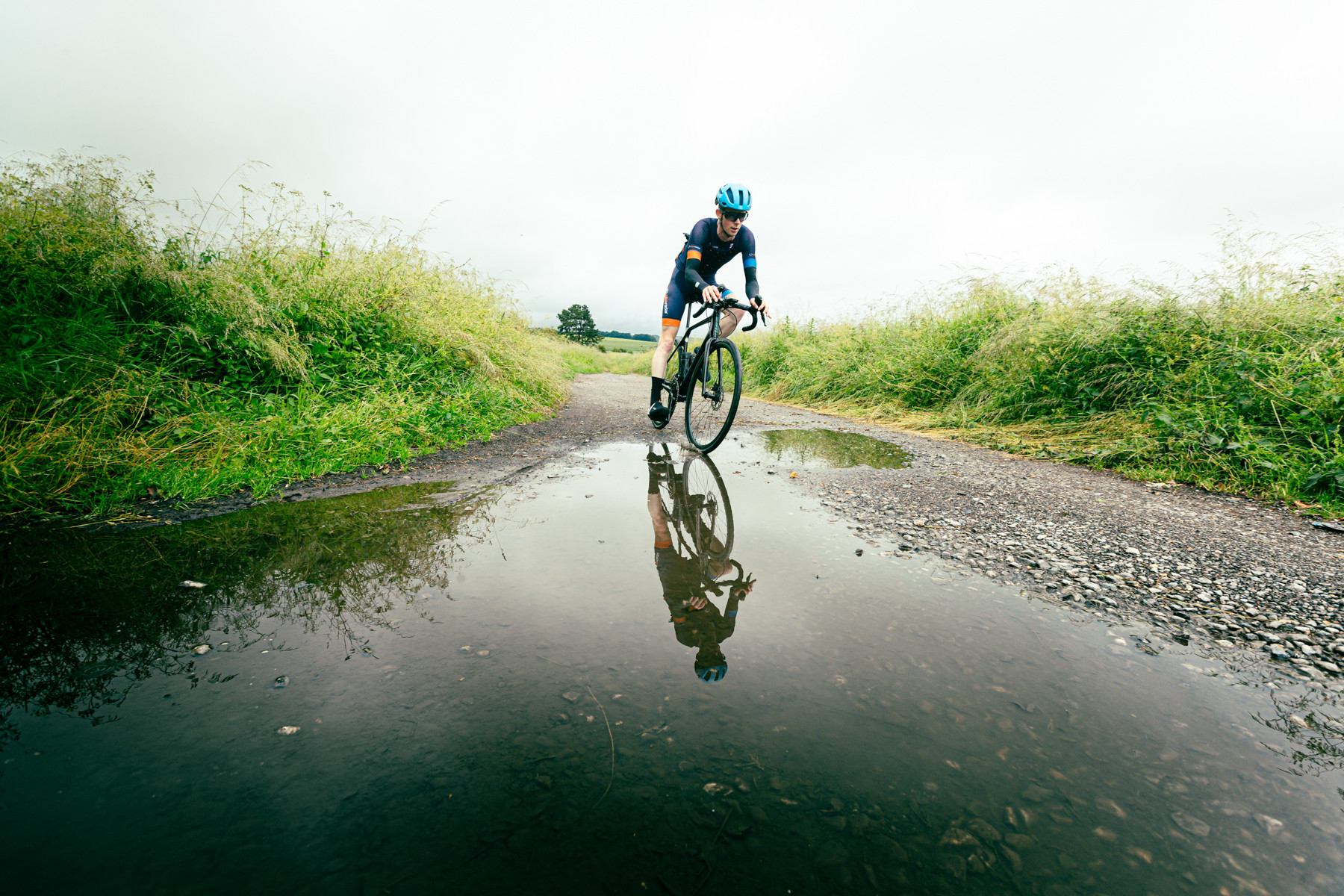 Road cyclist riding in wet conditions
Road cyclist riding in wet conditions
In wet conditions or when rain is anticipated, lowering tyre pressure by about 5psi on both tyres can improve grip by increasing the tyre contact patch with the road.
Higher temperatures, whether from ambient conditions or rim braking, can increase tyre pressure. During hot summer days with long descents and rim brakes (especially with carbon clincher wheels or latex inner tubes), avoid over-inflating tyres to prevent dangerously high pressures due to heat build-up.
Tyre Construction and Materials
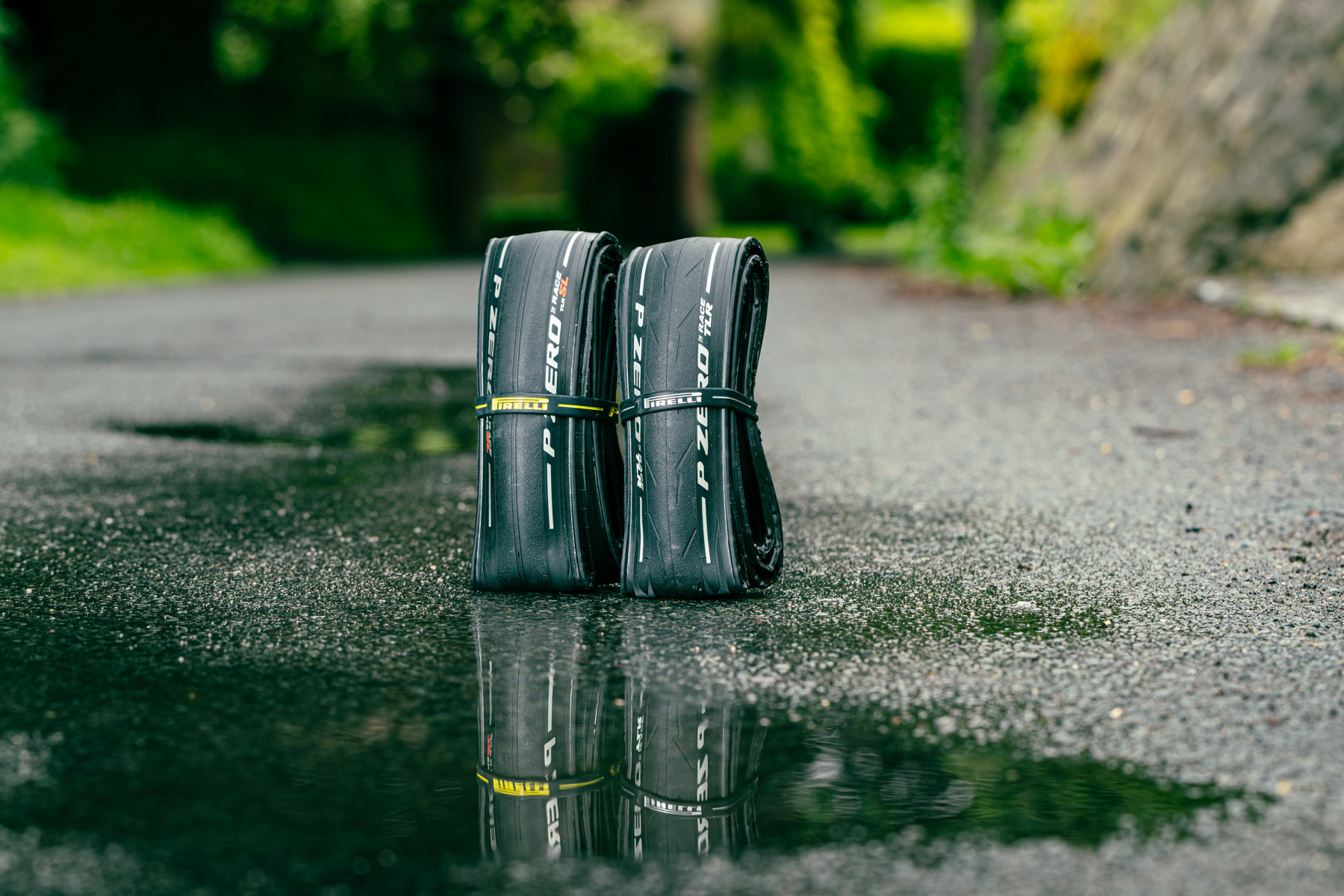 Close-up of a road bike tyre showing its construction and tread pattern
Close-up of a road bike tyre showing its construction and tread pattern
Tyre construction and materials also influence optimal pressure, albeit to a lesser extent. Racing or summer tyres typically use thinner casings with a higher thread count (TPI), making them more flexible for a smoother, faster ride.
Winter road bike tyres usually have stiffer, more durable casings with lower thread counts and thicker tread for enhanced durability and puncture protection. When switching to winter tyres, you might need to slightly reduce tyre pressure as their optimal pressure for comfort and grip tends to be a few psi lower.
Tubeless Tyre Systems
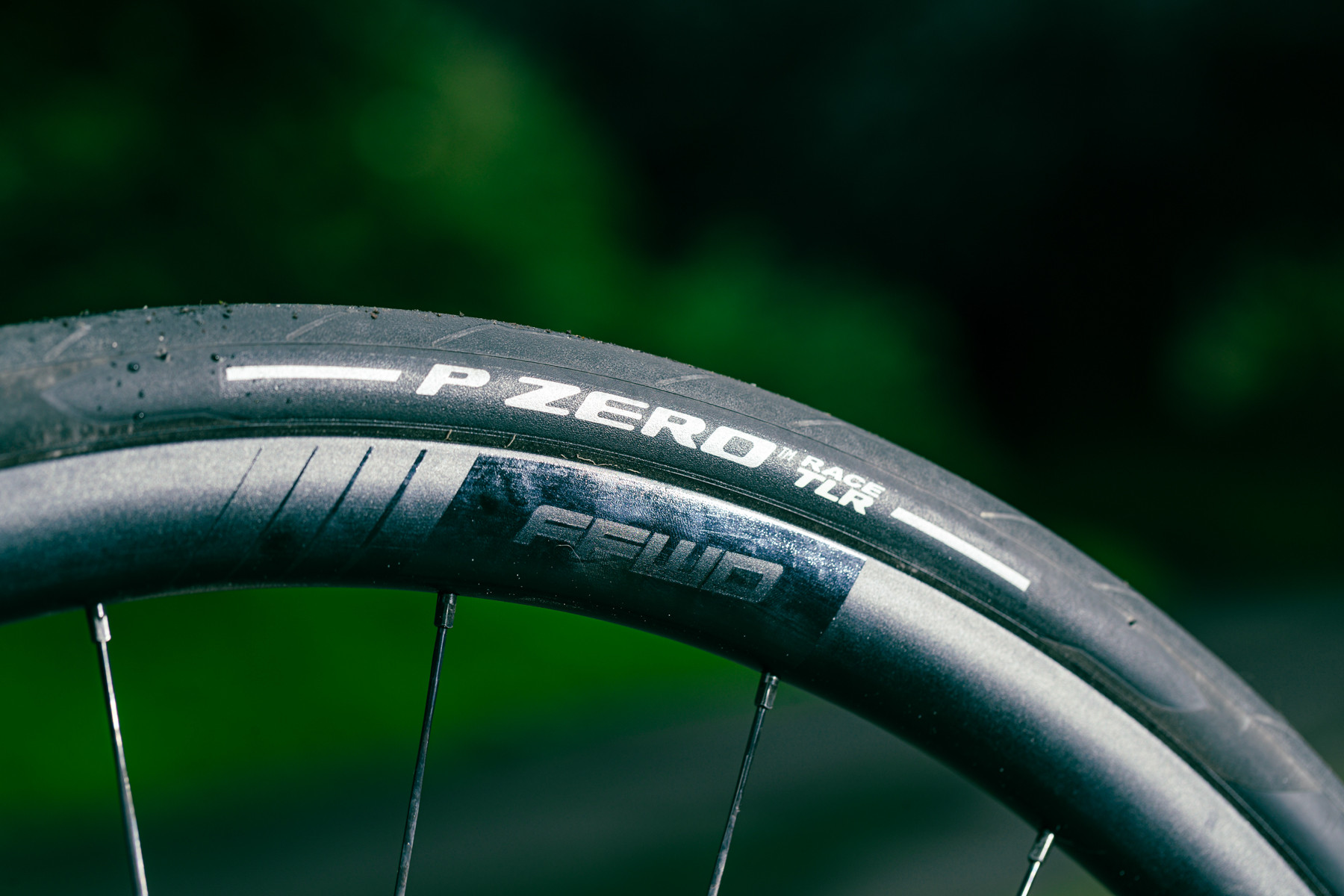 Road bike tyre with tubeless setup and sealant visible
Road bike tyre with tubeless setup and sealant visible
Tubeless tyres eliminate the risk of pinch flats, allowing for safely running lower pressures. Lower pressures enhance off-road grip, making tubeless tyres advantageous if you ride larger road tyres on light off-road or gravel surfaces.
Why Road Bike Tyres Lose Pressure Over Time
 Pair of Continental Grand Prix 5000 AS TR road bike tyres
Pair of Continental Grand Prix 5000 AS TR road bike tyres
Tyres naturally lose pressure over time due to permeation, where air slowly escapes through the tyre structure—a characteristic of the materials used. Regularly check your tyre pressure before each ride and top up to your desired pressure.
For extended bike storage periods (e.g., over winter), hanging your bike off the ground is recommended to prevent the inner tube from perishing in contact with the ground when fully deflated. Alternatively, periodically inflate the tyres to maintain pressure during storage.
Fine-Tuning Your Road Bike Tyre Pressure Through Experimentation
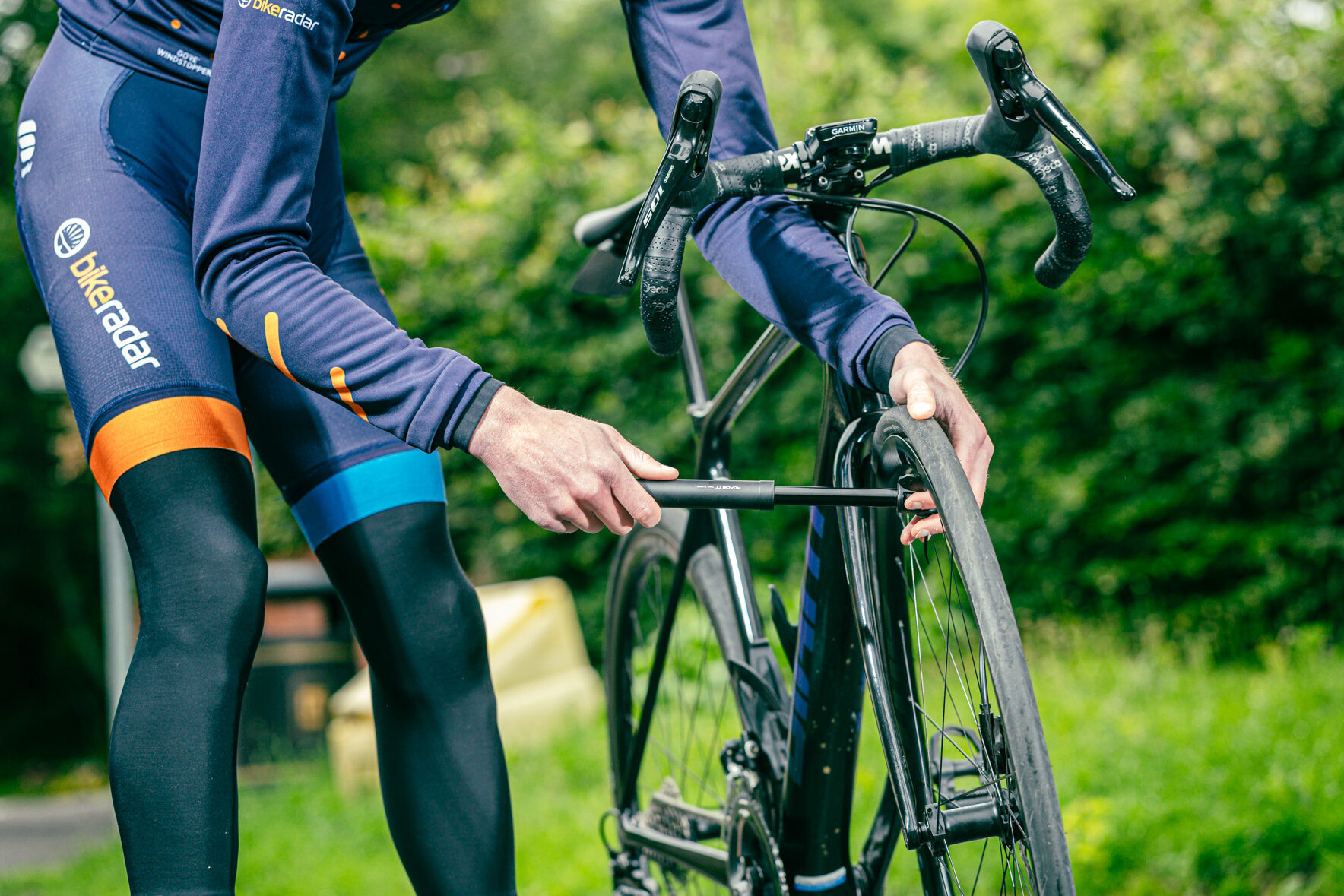 Road cyclist fixing a flat tyre on the roadside
Road cyclist fixing a flat tyre on the roadside
Fine-tuning tyre pressure involves experimentation. Start with the recommended pressures and consider your typical road conditions. If you ride on pristine tarmac, the recommendations are likely close to optimal.
For less-than-perfect roads, start with the recommendations and gradually decrease pressure in small increments of around 5psi per ride. Pay attention to how your bike feels. You should find a ‘sweet spot’ balancing speed and comfort—a pressure that feels smooth without the tyre feeling unstable in corners. Remember, erring slightly on the lower side is generally preferable.
Advanced Field Testing for Optimal Tyre Pressure
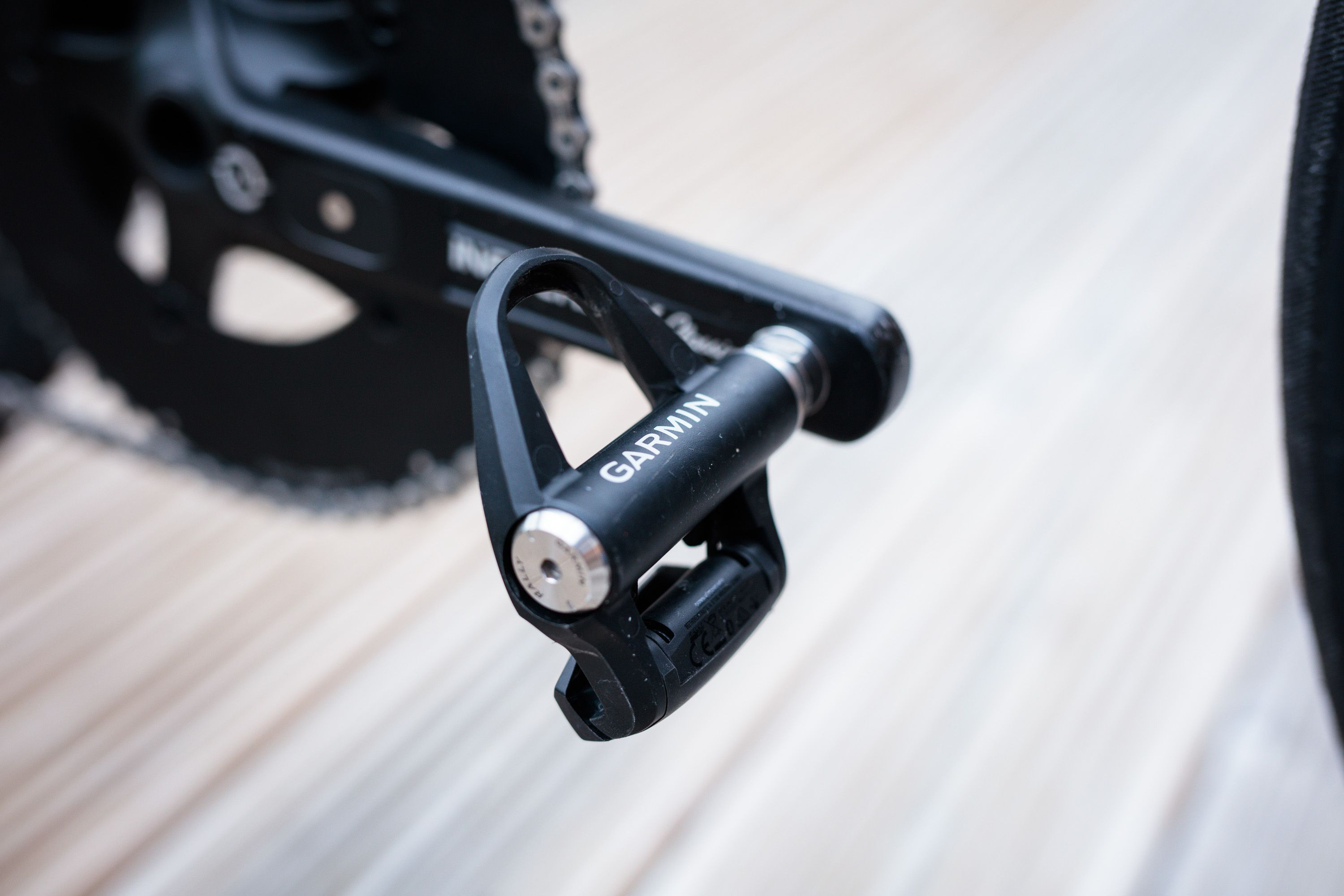 Cyclist conducting field testing with a power meter on a climb
Cyclist conducting field testing with a power meter on a climb
For serious cyclists, field testing with a power meter can precisely determine optimal pressure. Find a long, consistent climb with a gradient over 5% and test different tyre pressures. Observe how pressure affects the power needed to maintain a speed or your speed at a set power output.
This data helps pinpoint the tyre pressure requiring the least power for a given speed or the fastest speed for a set power output, under your testing conditions. Maintain consistent conditions (system weight, position, weather, etc.) for each test to ensure accurate results.
Selecting the Best Road Bike Tyres
Different tyres perform uniquely, and experience will guide you to tyres best suited for your riding style. Explore buyer’s guides on the best road bike tyres and best tubeless tyres when seeking new tyres to further optimise your ride.

